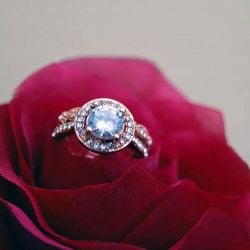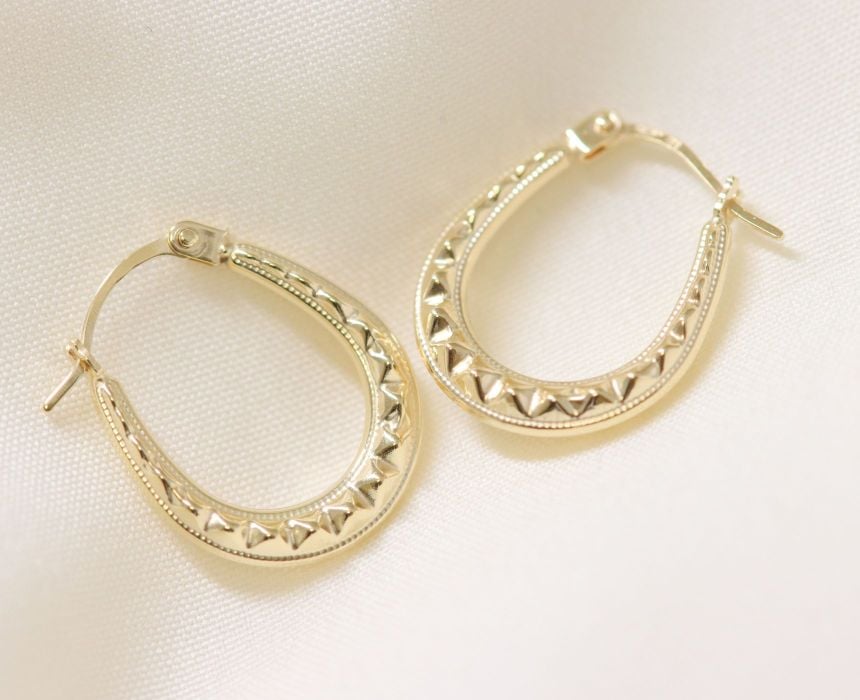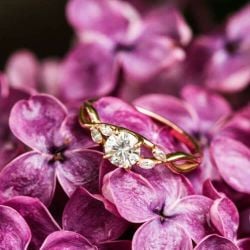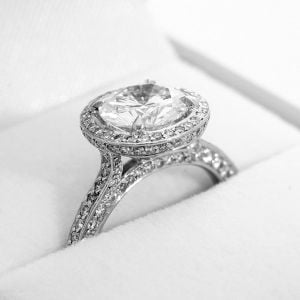- ‹Home
- ‹
- /
- Jewellery & Watch Guides
- /
- A Beginners Guide to Understanding The 4C's

The 4 C’s of Diamonds
Understanding the 4 C’s – Carat, Cut, Colour and Clarity – is a vital first step before starting your diamond buying journey. These four key factors collectively serve as the universal language for assessing the quality and value of a diamond. Carat, or carat weight, refers to the size and rarity of the diamond. The second C stands for Cut, which refers to the shape of the stone but can also refer to the arrangement of facets within the stone. The variations of this arrangement will alter the way that the light catches the gemstone, meaning the brilliance and sparkle of the cut may vary from one to the next. The third C – Colour – signifies the presence or absence of colour within the diamond, which can range from colourless to subtly tinted. The fourth and final C is Clarity. This gauges the purity of the diamond by evaluating both internal and external flaws within the solitaire. Gaining a solid understanding of the 4 C’s before purchasing ensures that you can make an informed decision, considering your preferences, budget and aesthetic taste when making the final purchase decision.Diamond Rings
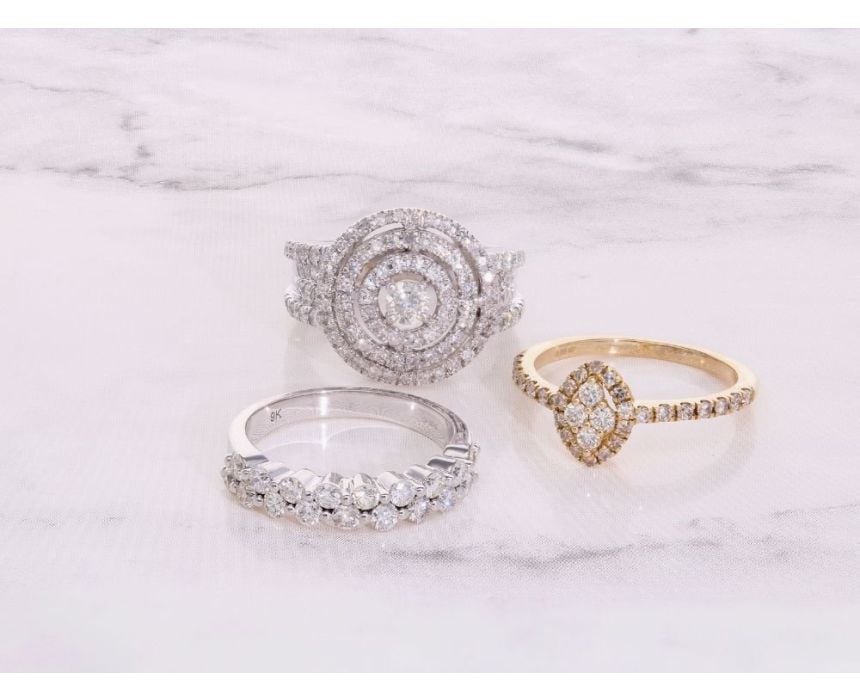
Carat
The Carat, or Carat weight, of a diamond refers to the unit of measurement that dictates the weight of a diamond. This is a fundamental aspect of diamond evaluation, and the significance of this weight is directly correlated to the gemstone's size and rarity.
- Less than 0.10 carats – This carat weight is considered to be a small diamond. They are often referred to as ‘pointers’ and are commonly used as accent stones in jewellery settings.
- 0.10-0.99 carats – Diamonds of this weight are categorised as medium-sized diamonds. Many engagement rings fall within this category.
- 1.00 carat – One-carat diamonds are a significant milestone in diamond sizing and a highly popular choice for engagement rings.
- Over 1.00 carat- Diamonds within this category are labelled as larger diamonds.
- Over 2.00 carats – These diamonds are categorised as very large diamonds. They can be quite expensive and are often used for high-end jewellery pieces.
- Over 5.00 carats – These rare and prestigious diamonds are considered to be exceptionally large diamonds. They are most often used as centrepieces for high-profile jewellery.
- Over 10.00 carats – Extraordinarily large diamonds are exceptionally rare and valuable. They are only likely to be found in the collections of very wealthy individuals, museums or as part of historic jewels.
As the carat weight increases, so does the rarity and value of the diamond. It is important to remember that the carat of a diamond is a personal preference, and the ‘perfect’ carat can depend on a person's aesthetic taste and budget. It is also worth noting that the carat of a diamond is not the only factor to consider, while high carat weight is often associated with higher value diamonds, this must be balanced with the cut, colour, and clarity of the diamond to achieve a well-rounded gemstone.
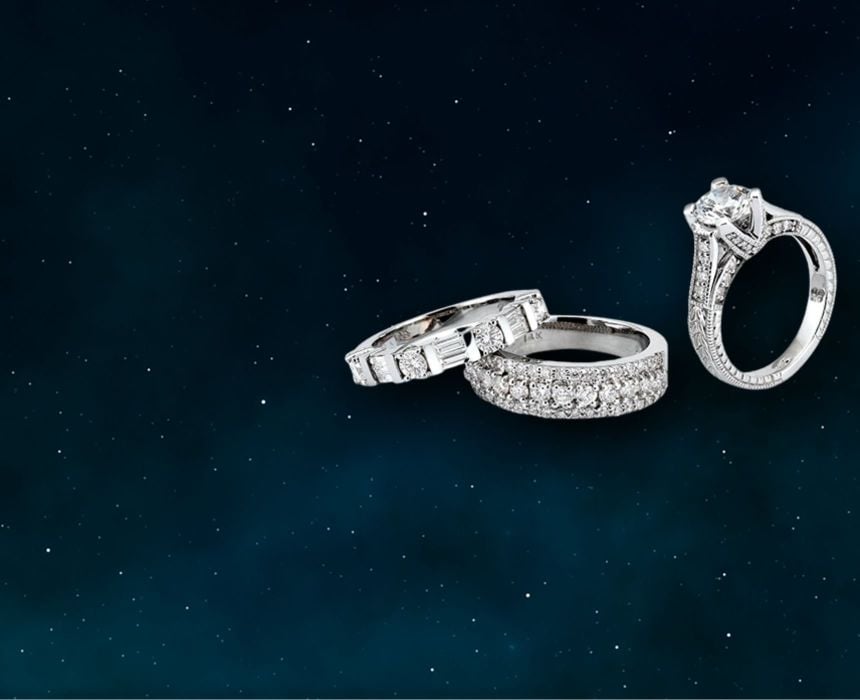
Cut
In the context of diamonds, the Cut specifically refers to the facets and proportions within the precious stone, as well as how effectively it reflects light. A well-cut diamond is crucial for maximising brilliance and sparkle. The Cut also refers to the overall shape of the diamond within its setting.
Round Brilliant Cut
This is the most popular and classic diamond shape, known for its 58 facets that maximize brilliance and sparkle. It is a versatile and timeless choice.
Princess Cut
A square or rectangular cut with pointed corners, the princess cut is popular for its contemporary and modern look. This option provides a balance between brilliance and shape
Emerald Cut
Rectangular, this option features cut corners which emphasise clarity while providing a unique and elegant appearance. It usually features a larger table (the flat top surface), offering a more open and transparent aesthetic.
Asscher Cut
Featuring many similarities to the emerald cut, the Asscher cut features a table and cut corners, however, the table of this cut is notably smaller than that of the emerald cut. It also features wider-set facets, creating a more vintage-inspired look.
Marquise Cut
Featuring pointed ends and a lengthened, oval-shaped middle, the marquise cut is known to create the illusion of a larger diamond due to its elongated shape. It is known for its elegance and elongating effect on the finger.
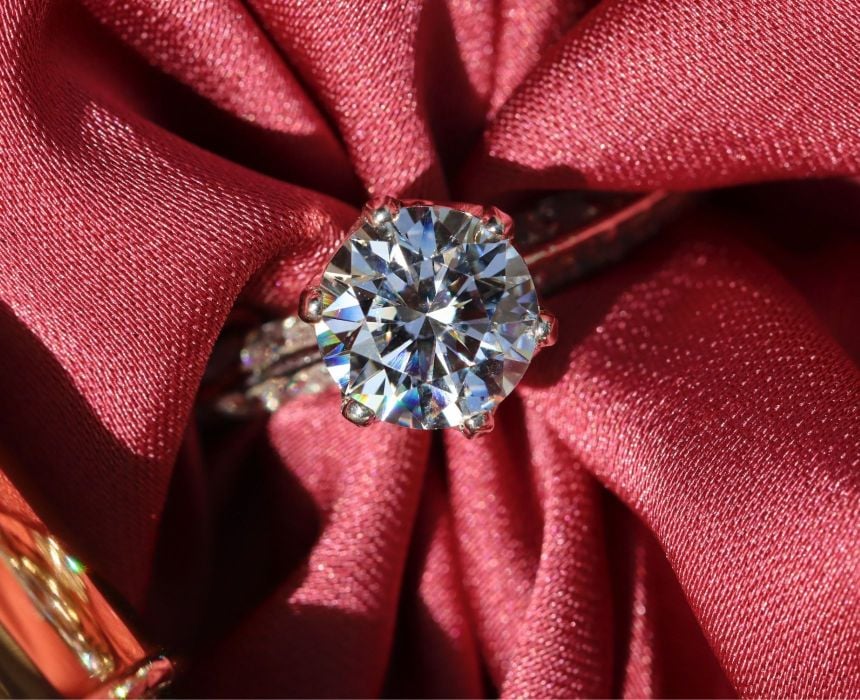
Oval Cut
A slightly modified version of the popular brilliant cut, the oval shape combines the brilliance of the round cut with an elongated outline. It offers a unique and flattering appearance.
Radiant Cut
A rectangular or square cut with trimmed corners, the radiant cut combines the elegance of the emerald cut with the brilliance of the round cut, making it a popular choice for those seeking both sparkle and shape.
Pear Cut (or Teardrop)
Combining the round and marquise shapes, the pear cut resembles a teardrop with one pointed end, offering a unique and elegant appearance.
Cushion Cut
A square or rectangular cut with rounded corners, the cushion cut is known for its soft and romantic appearance. It can vary in facet patterns, providing options for different levels of brilliance.
Heart Cut
A popular option to symbolise love, the heart cut is a romantic choice with a distinct heart shape. Achieving a well-proportioned heart cut requires skill to ensure symmetry.
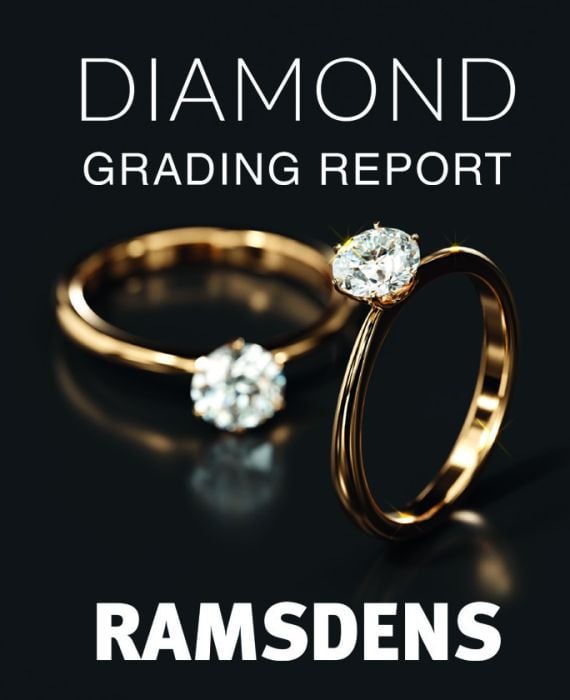
Colour
The colour grade of a diamond refers to the absence or presence of colour within the diamond. The grading scale is standardised and ranges from D to Z. A grade D diamond signifies a completely colourless diamond, while grade Z indicates that a diamond has noticeable yellow or brown hues. The colour grades a diamond receives impact the overall look as well as the value of the gemstone.
Diamonds that fall within grades D to J are often considered more desirable, as the lack of colour within them allows for more transparency within the stone, meaning more light can pass through and therefore enhance the brilliance. Choosing a diamond within this range provides you with an ideal balance between the aesthetic and value and ensures a stunning solitaire without paying more for imperceptible colour distinction.

Clarity
The clarity of a diamond refers to any internal flaws (inclusions) or external flaws (blemishes) and is a pivotal factor in evaluating a diamond's purity. The smaller these imperfections are, or the fewer of them, there are, will result in a higher clarity grade. The higher the clarity grade a diamond is given, the more aesthetically pleasing and valuable it is deemed, and subsequently the more desirable that diamond will be.
The clarity scale ranges from flawless (no inclusions or blemishes visible under 10x magnification) to included (inclusions and/or blemishes visible to the naked eye). In the middle of these falls categories such as Very, Very Slightly Included (VVS1 and VVS2), Very Slightly Included (VS1 and VS2), and Slightly Included (SI1 and SI2). The deciding factors that categorise each diamond into each grade are based on the size, location, and visibility of the imperfections.
It is important to find a comfortable balance between clarity and budget. Although flawless diamonds are the most desirable, meaning they are usually the most expensive and the rarest. Diamonds in the Slightly Included and Very Slightly Included categories often provide excellent value, with their imperfections only being visible with intense magnification.
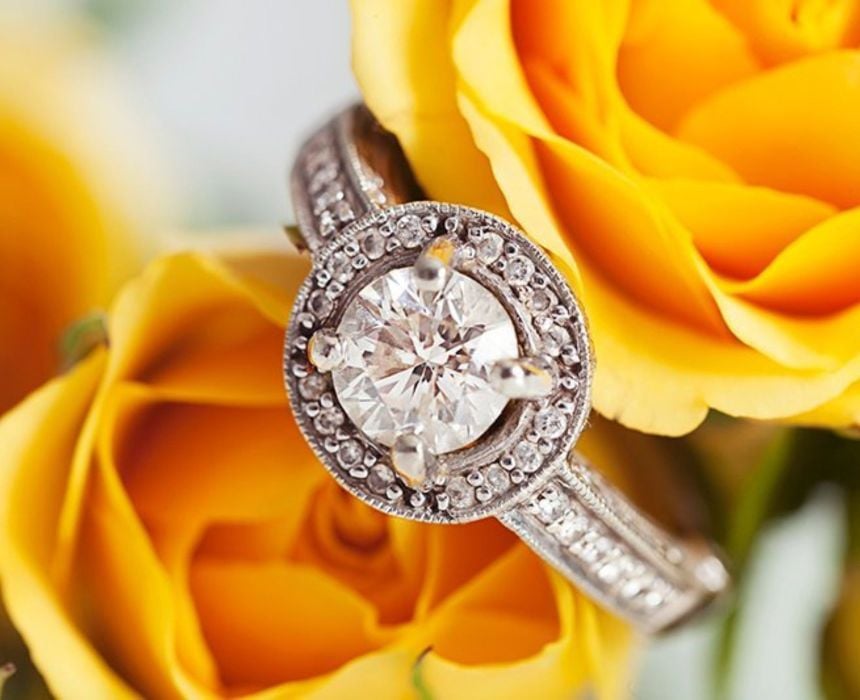
Choosing the Perfect Diamond
Finding your perfect diamond means finding the perfect balance of the 4 C’s, that meet your taste and requirements. Balancing the 4 Cs of diamonds—carat weight, cut, colour, and clarity—requires consideration of your individual preferences and budget constraints. The best place to start is by identifying your priorities, whether it's emphasising brilliance, opting for a larger carat weight, or selecting a specific diamond shape. Once you have these figured out, the next step is to allocate your budget, ensuring that spending aligns with the aspects that matter most to you. You may want to prioritise the cut of your diamond to ensure maximum brilliance, as a well-cut diamond significantly influences light reflection and emphasises the sparkle. It is also important to consider the diamond shape and overall aesthetic, choosing one that resonates with your style, as well as thinking about your preference in colour. With options ranging from colourless (D) to near-colourless (G), you should determine whether the colour grade of the diamond is important to you.
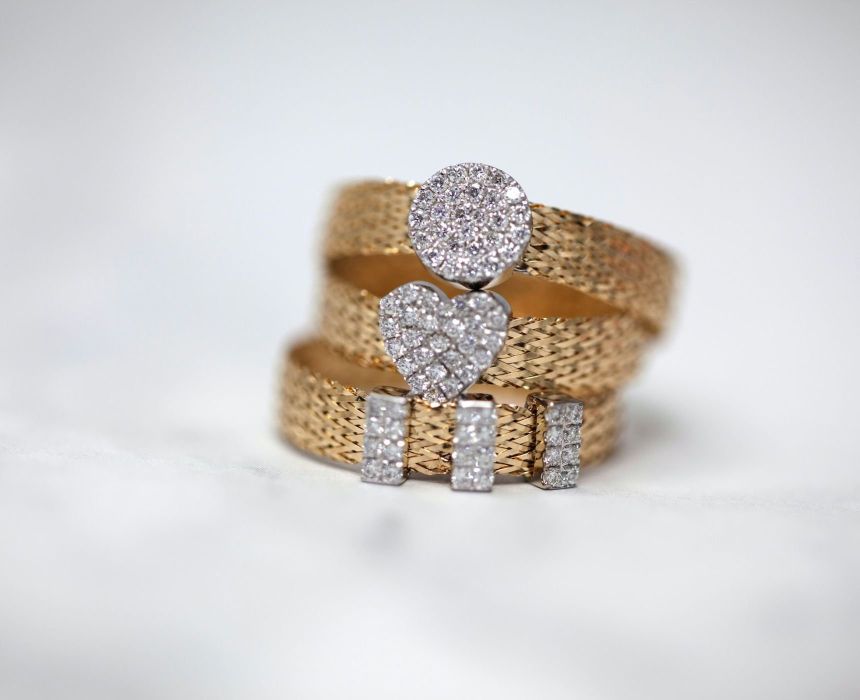
Diamond Jewellery at Ramsdens
Explore our exquisite collection of diamond jewellery, featuring a variety of styles that capture the timeless allure of diamonds. Our curated selection includes an array of vintage and modern pre-owned pieces. Adding diamond jewellery to your collection not only represents a valuable investment but also introduces a timeless elegance to your style. Whether you seek a captivating diamond engagement ring destined for a lifetime of elegance or an diamond necklace, our diamond jewellery range presents a wealth of exquisite options.
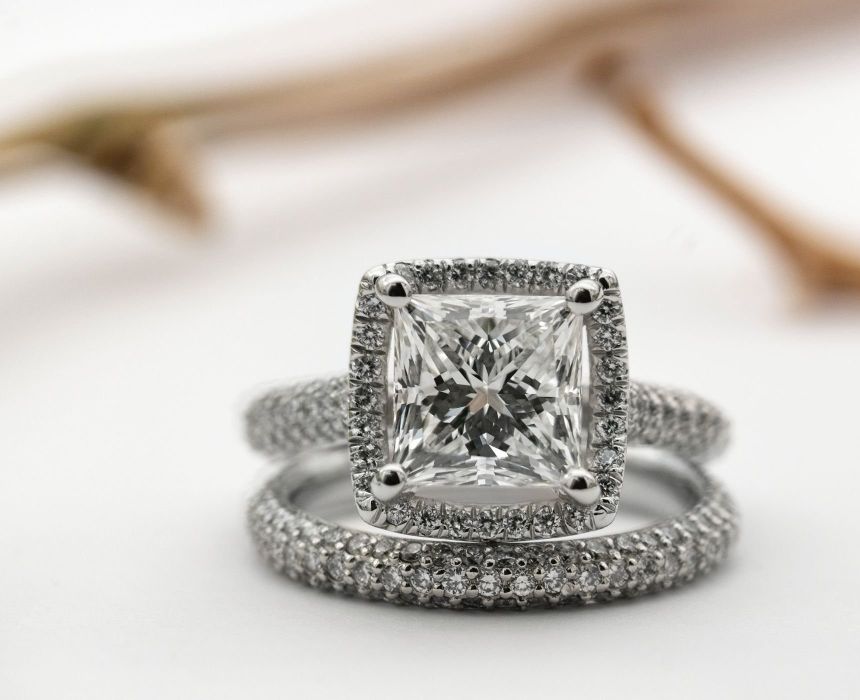
Diamond Glossary
- Carat - The unit of measurement for a diamond's weight.
- Cut - Refers to how well a diamond has been shaped and faceted, influencing its brilliance and sparkle.
- Colour - Describes the presence or absence of colour in a diamond, graded on a scale from D (colourless) to Z (light yellow or brown).
- Clarity – This evaluates the presence of internal (inclusions) and external (blemishes) flaws in a diamond.
- Inclusions: Internal flaws or imperfections within the structure of a diamond.
- Blemishes: External flaws or imperfections on the surface of a diamond.
- Flawless: A diamond with no inclusions or blemishes visible under 10x magnification.
- Included (I1, I2, I3): Diamonds with visible inclusions or blemishes to the naked eye.
- Very, Very Slightly Included (VVS1, VVS2): Diamonds with minute inclusions that are difficult to see under 10x magnification.
- Very Slightly Included (VS1, VS2): Diamonds with minor inclusions that are extremely difficult to see under 10x magnification.
- Symmetry: Refers to the alignment and balance of a diamond's facets and how well they work together.
- Table: The flat top surface of a diamond.
- Culet: The small facet at the bottom tip of a diamond's pavilion.
- Pavilion: The bottom part of a diamond below the girdle.
- Girdle: The outer edge or circumference of a diamond.
- Brilliance: How much light reflects from a diamond, also referred to as its brightness.
- Fire: How light shone toward a diamond disperses into various colours.
- Scintillation: The flashes of light and sparkles as a diamond moves under a light.
- Fluorescence: The visible light emitted when a diamond is exposed to ultraviolet (UV) light.
- Certification: A document that accompanies a diamond, provided by a certified lab, verifying the quality and characteristics of a diamond.
- Shape: The form of a diamond, such as round, princess, emerald, etc.
- Pavé: A setting style where small diamonds are set closely together, usually covering the surface of the jewellery.
- Halo Setting: A setting that features a central diamond with smaller diamonds surrounding it – like a halo.
- Bespoke: Custom-made or tailored to specific preferences.
DIAMOND RINGS





